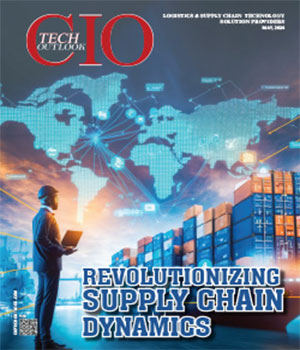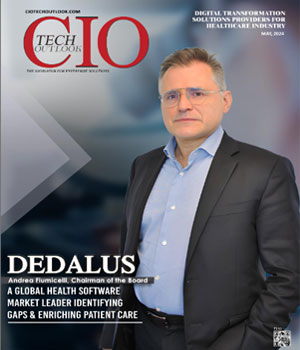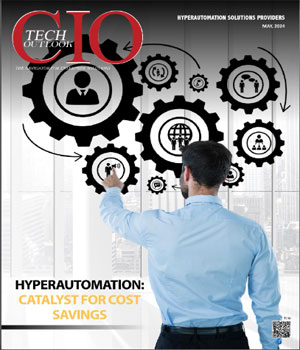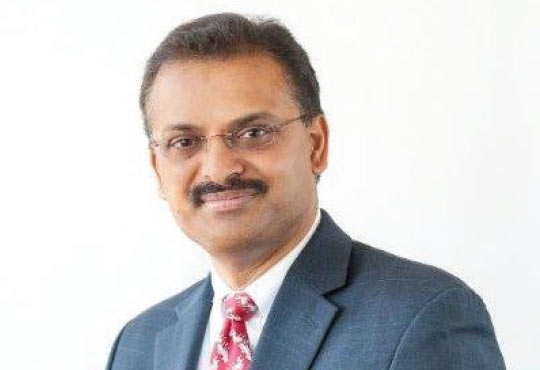
CIOTechOutlook >> Magazine >> August - 2016 issue
Develop a Customer-Centric Insurance Industry with Revised Focus on Personalized Services
By
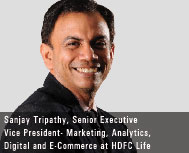 A joint venture between HDFC, India’s leading housing finance institution and Standard Life plc, the leading provider of financial services in the United Kingdom; HDFC Life provides Life Insurance & Pension Solutions through 500 branches in India touching customers in over 900 cities and towns.
A joint venture between HDFC, India’s leading housing finance institution and Standard Life plc, the leading provider of financial services in the United Kingdom; HDFC Life provides Life Insurance & Pension Solutions through 500 branches in India touching customers in over 900 cities and towns.Q. The insurance industry is somewhere in the middle of the pack when it comes to digital transformation. According to you which technology trends are expected to rock the Insurance Industry in the upcoming years?
i) Mobility: Mobile devices are here to stay – It’s an undisputed fact that the internet penetration in India is riding on the mobility market. In Insurance sector, major players are working towards goal of becoming digital first. While mobile is quickly becoming a must for insurers, implementing mobile successfully requires more than simply providing downloadable apps to employees, agencies and customers. Insurance companies need a strategic approach to their mobile offerings, ensuring truly enhanced user experience and provide the functionality that users want.
ii) Big Data & Analytics: Insurance is a data driven sector which creates volumes of structured & unstructured data. Thus Big Data holds its relevance more than ever in determining key insights to make intelligent business decisions. Insurers will be using the information to build smarter products, improving underwriting outcomes and create efficiencies for the consumer, agent and themselves.
iii) Automating regulatory compliance requirements: Insurance being highly regulated industry, it is critical to be adaptive to the changes made in process guidelines by the regulator. With rising technological advances, modern core systems will make automating processes as per regulatory compliance easy compared to legacy systems.
iv) Innovation through digital touchpoints: Insurance companies have to aggressively work towards providing innovative and customized solutions and interfaces to the consumers. Usage of relevant digital platforms and tying up with other digital service providers to provide a better and reliable service will be the key.
v) Telematics: Few Insurers in developed countries have already started providing Usage based Insurance (UBI) in auto insurance. Such technologies provide facility of personalized quotes and services to the consumers and ease of reliable customer information to the Insurer. Such Innovative technologies are still evolving but have a capacity of taking over the way things are insured.
Q. Intelligent interfaces such as wearable computing, home sensors, and vehicle telematics are blurring the physical as well as digital world. With industry experts hoping intelligent edge devices to bring massive disruption to the insurance industry, how do you think will Digital-physical blur transform the industry?
The rising technological advances do promise us disruption; however the scale of same depends on the adaptability of both the Insurers and the consumers. The industry will become more customer-centric – with revised focus on personalized services. The consumer will accept the innovation as per his convenience. The Insurers moving forward with technologies like telematics, wearable computing will have different business models to evaluate – as the volume of data and financial commitment involved will increase multi-fold. For few it may be tempting to wait and watch where the industry moves, but waiting too long can be potentially dangerous as they may be left with small segment of customers who don’t fit in their pricing model.
Q. Most established companies in the insurance industry have been slow to adopt digital tools and business models, relative to other industries, such as retail, media, travel and retail banking. What is holding back the insurance companies?
The regulatory framework which governs the insurance industry ensures that any change being made into the existing systems is aptly verified before being implemented. Hence in most cases the digital tools which are adopted by the insurance companies go through a long cycle of evaluation. So whenever we evaluate either a tool or a technology to be adopted it has to be something which is long term and values business as a priority.
Q. Most insurance executives realize they have to step up their digital investments. Yet many remain unclear about exactly where to start and how to proceed in organizing for digital innovation and redesigning their processes. Can you suggest some guidelines for the same?
We believe that change in the existing framework which is adopted by the users is equivalent to a risk. Every risk thus is evaluated based on three parameters, first whether it will help me increasing the revenue from the change, second whether the solution would help the customer experience and third will it give me more insights into the consumer behaviour leading to better systems in the future. If the solution provides apt answers to all these questions it’s considered for adoption. Another important factor is scalability. We evaluate whether the innovation would be accommodating of growing workload without requiring major redesign in the future.
Q. How does HDFC Life see the digital transformation of the insurance industry? What transformation is HDFC Life going through?
We put customers at the top pedestal and ensure that any change that we bring to the existing systems brings utmost value to them. At present we are upgrading our systems to ensure that the customer journey which might have started from any of the touch points remains coherent. We are also adopting an approach where the users would be able to continue their form filling from different devices. Since in insurance industry the form fields that the user has to fill up before the policy is issued to them are more we wanted to ensure that even if a user starts the journey on one device they are able to complete it from a different device too. Many more such initiatives have been taken by us to ensure that there is more transparency to the consumer from the time she makes the payment to the time a policy is issued to her.
CXO Insights
Mobile Technology: Revolutionizing e-commerce
By Abhishek Vinod Singh, Senior Vice President, Kellton Tech
Innovative and Disruptive Technologies in HR
By Bala V Sathyanarayanan, EVP of Business Transformation & CHRO, Xerox
iPredictt: Predicting and Actualizing Profits...

